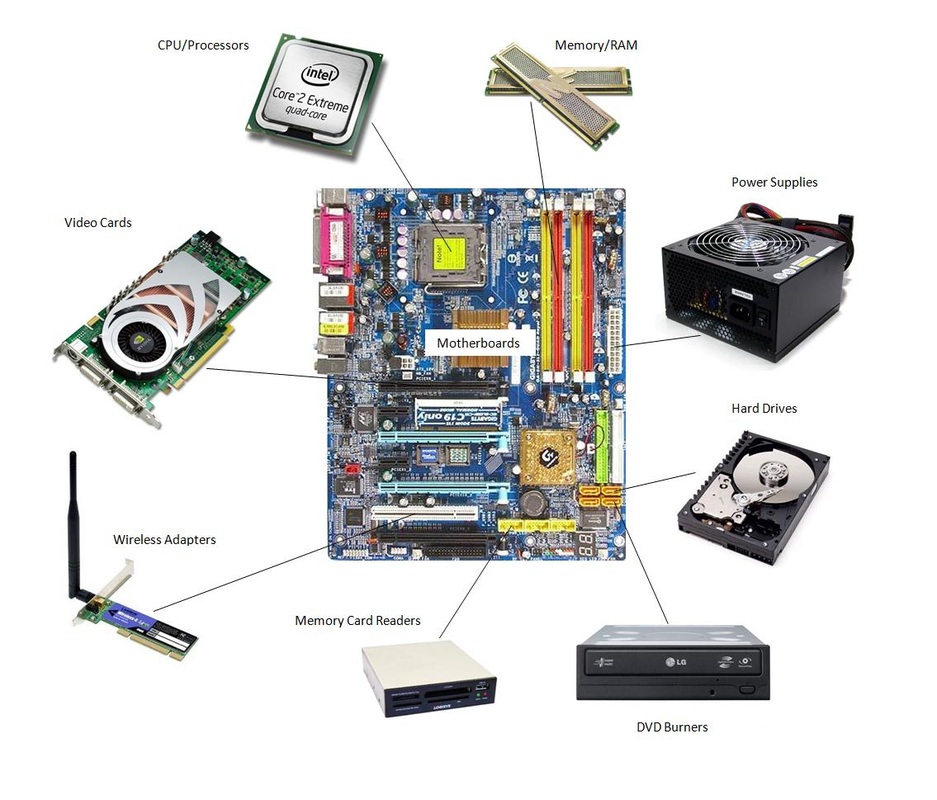In this age of rapid technological advancement, the need for computer components is at an all-time high. Whether you're a DIY enthusiast, an occasional gamer, or an IT professional, finding high-quality surplus computer parts can make a huge difference. These components offer an economical method to enhance or fix your system, but they provide an opportunity to investigate how computers operate. Armed with a little information and mindful assessment, venturing into surplus hardware might result in amazing finds and cost reductions.
On the other hand, shopping for surplus computer parts requires a discerning eye and some know-how. Beginning with spotting web up to confirming compatibility with your current configuration, this guide intends to arm you with the essentials for a fruitful buying journey. You will discover how to identify premium parts, key aspects to consider in critical components like motherboards and power supplies, and tips on finding the best deals in the marketplace. Whether you're building a budget gaming rig or improving your professional workstation, understanding these key factors will help you make informed decisions and avoid common pitfalls along the way.
Essential Factors To Consider Purchasing Extra Items
As you venture into the realm of surplus electronics parts, the first thing to think about is the supplier of the components. It is crucial to buy from reputable sellers, whether they are e-commerce sites, physical stores, or auctions. Researching the seller’s credibility through ratings and testimonials can help you avoid potential pitfalls. Look for vendors that have transparent refund policies and warranties, as these can offer reassurance about the standard of the components you are considering.
Next, it's crucial to check the status and features of the surplus components. Not all surplus parts are of equal quality; some might be gently used, while others may have considerable deterioration. Pay careful attention to product details and pictures. For critical components like mainboards and CPUs, specifications about their past use, fit with current systems, and upgrade possibilities should be taken into account. Always look for signs of defects, such as burns on the printed circuit board or missing components, which could imply that the component is not a wise purchase.
To wrap up, evaluate the cost and make sure you are getting good value for your spending. The price of excess components can vary widely, so it is essential to analyze comparable parts across different platforms. Be aware of potential hidden costs, such as delivery charges or tariffs for international purchases. Using online tools can help in guiding your choice, ensuring you don’t spend excessively for items that may not fit your requirements or requirements.
How to Recognize Quality Surplus Items
As you looking for excess PC components, the first action in assessing top-notch components is to research trusted suppliers. Seek for sellers with favorable feedback and a history of transparency regarding the condition of their items. Renowned surplus suppliers and clearance companies often provide thorough details and guarantees on their components, allowing it more straightforward to determine the condition before finalizing a buy. Moreover, online marketplaces that focus in tech gear can offer user feedback that shows trustworthy suppliers.
One more crucial aspect to ponder is the quality of the parts. Inspect for visible evidence of usage, damage, or fixes. Top-notch surplus parts typically show minimal scratches or dents. Pay particular attention the ports, contacts, and ports, as these sections can show usage history and imminent problems. Components that are lacking rust and dust accumulation generally signify better care and longevity. Also, when possible, inquire about a testing report or confirmation of functionality, especially for important items like mother boards and CPUs.
Lastly, familiarize yourself with the standards and models that are celebrated for their durability and efficiency. Specific brands and lines are esteemed in the technology industry for their sustainability or upgrade potential. Knowing what to look for in a pre-owned GPU, CPU, or memory can help you make informed decisions and prevent lower-quality options. By combining vendor reputation, physical inspection, and product investigation, you can efficiently identify quality surplus computer parts that offer the best value for your purposes.
Enhancing Value of Leftover PC Components

To genuinely boost value with surplus computer parts, a thorough understanding of your project goals is essential. Before making any purchases, clearly identify what you want to attain with your build or enhancement. This will aid you steer clear of unnecessary costs on components that might not align with your needs. Concentrate on performance and interoperability, ensuring that the surplus parts you evaluate will work well with your existing setup. Researching https://rentry.co/qsax527r and checking out ratings can provide insights into which components will deliver the best performance for your budget.
Another critical consideration is knowing where to buy. Surplus tech parts can be found via various sources, such as local PC maintenance shops, online platforms, and bidding sites. It's helpful to visit forums and community forums where other DIY enthusiasts share their experiences and recommend trustworthy sellers. Building a community can also lead you to exclusive deals and insider tips on get high-quality parts at lower prices, giving you an edge in finding the top equipment.
Finally, to ensure the longevity of your surplus components, put some work into proper upkeep and upgrades as necessary. Consistently cleaning parts, tracking performance metrics, and being aware of the cooling system will help prolong the lifespan of your parts. By taking these forward-thinking steps, you can maximize both the functionality and the value derived from surplus parts, experiencing fulfillment from your DIY projects while cutting money in the process.
